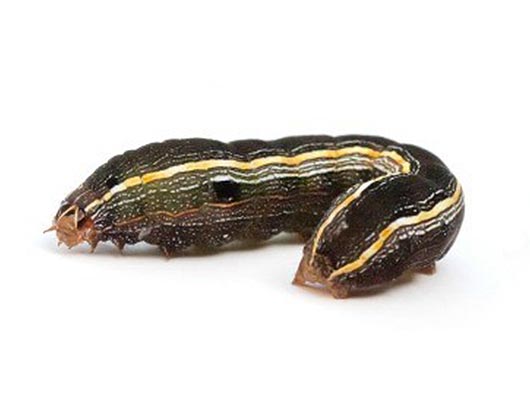

The pest got its name because they appear to march across hay fields, consuming the grass in their path.Īrmyworm moths can lay up to 2,000 eggs that hatch in two to three days, according to a 2019 report by Allen Knutson, retired AgriLife Extension entomologist.Ĭorriher-Olson said there are four to five generations that move throughout the state per growing season. They can grow up to one inch in length when mature. This could be a two-, three- or four-spray situation if forage for hay or grazing is valuable to them.” Armyworms – Know Your EnemyĪrmyworms are green, with brown or black colorations and can be identified by the white inverted Y on their head.

“Armyworms are not a ‘spray once and they won’t be a problem’ kind of thing. “The big question is how long will they be a problem, and the answer is until the first killing frost,” she said.

Armyworms in those numbers should be treated immediately because they consume 85% of their diet in the last two or three days of their larval stage.

They will, however, consume freshly cut grass, and should be treated when armyworm numbers are beyond three or more caterpillars per square foot.Ĭorriher-Olson said it is critical that producers have pesticides ready for applications as soon as armyworm numbers near the recommended threshold. Harvesting forages can be a quick solution to climbing armyworm numbers because they do not consume dry plant matter, she said. But with most of the state out of drought and temperatures where they are, it’s hard to imagine they are not everywhere.”Ĭorriher-Olson said irrigated fields like most forage production meadows in the Panhandle may be especially susceptible to the pest because of forage quality and quantity. I’m hearing from Central to North Texas mostly and have not heard from anyone in West to South Texas. “I spent all of Friday taking calls on armyworms. Vanessa Corriher-Olson, AgriLife Extension forage specialist, Overton, said inquiries about the pest have inundated her office after dry conditions were followed by a cool front and rain events – ideal conditions for armyworm outbreaks.


 0 kommentar(er)
0 kommentar(er)
